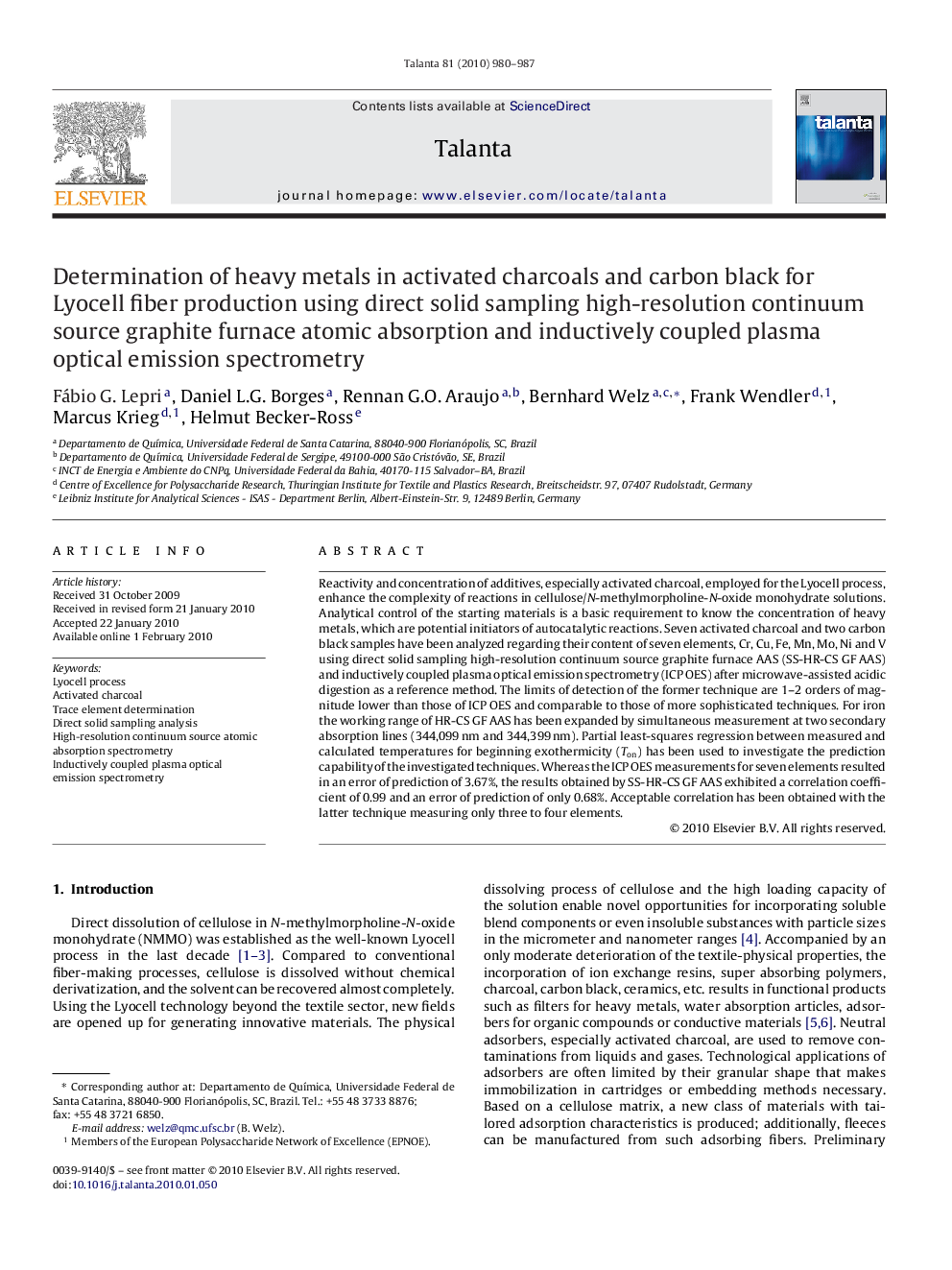| کد مقاله | کد نشریه | سال انتشار | مقاله انگلیسی | نسخه تمام متن |
|---|---|---|---|---|
| 1246525 | 969758 | 2010 | 8 صفحه PDF | دانلود رایگان |

Reactivity and concentration of additives, especially activated charcoal, employed for the Lyocell process, enhance the complexity of reactions in cellulose/N-methylmorpholine-N-oxide monohydrate solutions. Analytical control of the starting materials is a basic requirement to know the concentration of heavy metals, which are potential initiators of autocatalytic reactions. Seven activated charcoal and two carbon black samples have been analyzed regarding their content of seven elements, Cr, Cu, Fe, Mn, Mo, Ni and V using direct solid sampling high-resolution continuum source graphite furnace AAS (SS-HR-CS GF AAS) and inductively coupled plasma optical emission spectrometry (ICP OES) after microwave-assisted acidic digestion as a reference method. The limits of detection of the former technique are 1–2 orders of magnitude lower than those of ICP OES and comparable to those of more sophisticated techniques. For iron the working range of HR-CS GF AAS has been expanded by simultaneous measurement at two secondary absorption lines (344,099 nm and 344,399 nm). Partial least-squares regression between measured and calculated temperatures for beginning exothermicity (Ton) has been used to investigate the prediction capability of the investigated techniques. Whereas the ICP OES measurements for seven elements resulted in an error of prediction of 3.67%, the results obtained by SS-HR-CS GF AAS exhibited a correlation coefficient of 0.99 and an error of prediction of only 0.68%. Acceptable correlation has been obtained with the latter technique measuring only three to four elements.
Journal: Talanta - Volume 81, Issue 3, 15 May 2010, Pages 980–987